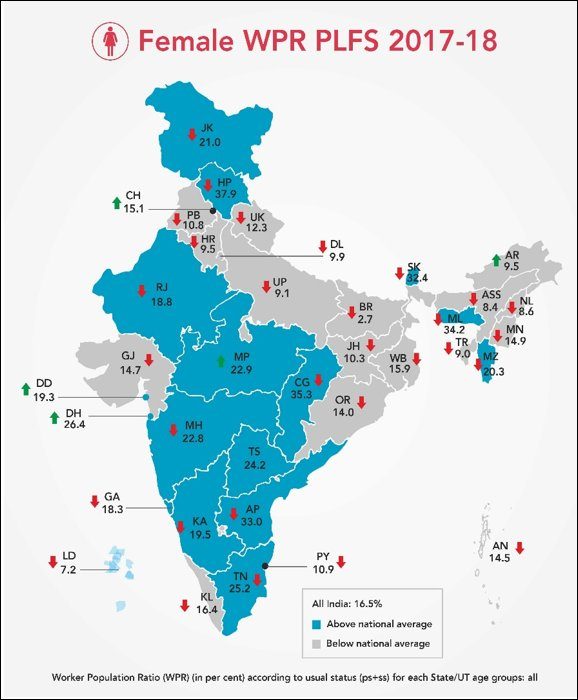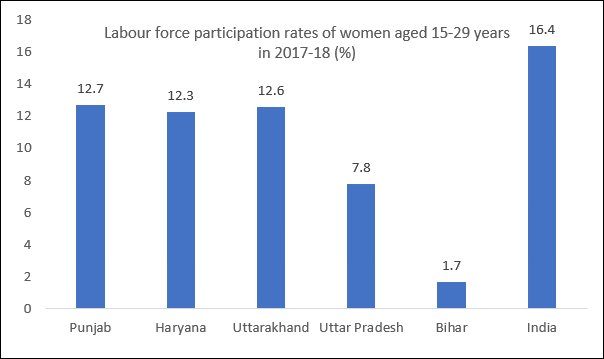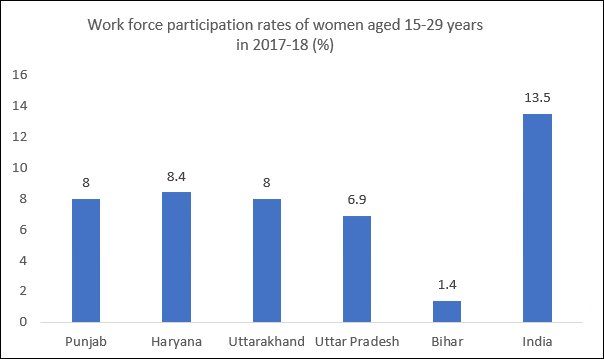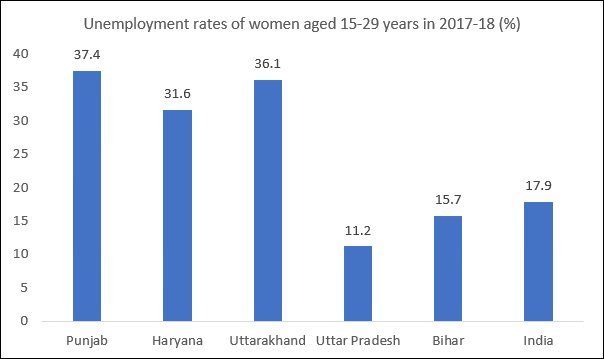The World Bank set its US ‘dollar-a-day’ poverty line using its 1990 data. Despite many…
India is failing her Young Women even in Terms of Work C. P. Chandrasekhar and Jayati Ghosh
Anyone who has been following the upsurge of protests across the country in the wake of the CAA-NRC moves of the government would have been impressed and inspired by the role played by young women. They have been forthright and fearless in articulating their concerns and demands, even in the face of overt repression by the state, and there is no doubt that they provide much hope for the future of the country.
These young women have already displayed much courage and resilience—but unfortunately these qualities are likely to become even more necessary, because in addition to Indian politics and society failing them, the economy also deals them a terrible hand. Many of the multidimensional problems Indian women have to deal with (like violence, lack of autonomy, lack of assets, restricted mobility) are interlinked, but the very poor employment generation and the associated lack of productive income opportunities has become an underlying context that particularly affects young women.
The latest official labour force survey of 2017-18 showed a dramatic drop in women’s work participation rates, to only 16.5 per cent from already low levels. In a growing economy, this is bizarre and almost unbelievable. It may well be true that there is significant under-reporting of women’s employment, especially with respect to work on family farms and enterprises, as well as lack of recognition of the productive contributions made by unpaid work within households. But such under-reporting is itself a sign of low status of women in a society, while the fact of extremely low rates of gainful employment cannot really be doubted.
Like everything else in this enormous country, there is substantial regional variation. Figure 1 shows that almost all states in the country showed a decline in women’s work participation rates (with the exceptions of Madhya Pradesh and Goa and some UTs like Chandigarh, Daman and Diu). There were some states that showed major declines from already low rates, including Gujarat and Odisha, and others in the eastern region like Assam and West Bengal that also declined moderately from low rates. But it is clear from the map that the worst affected states lie broadly along the Indo-Gangetic plain, with some in this mostly Hindi belt showing aggregate rates of women’s employment of less than 10 per cent.
Figure 1: Some states now show unbelievably low rates of women’s work force participation

It is also these states in which young women are especially disadvantaged. Despite girls’ educational enrolment increasing over the past two decades, to the point where near gender parity has been achieved up to secondary education, this still does not seem to have led to more employment for such more educated young women—if anything, employment rates have actually fallen.
In what follows, we consider the worst performing of these states, for young women especially: Punjab, Haryana, Uttarakhand, Uttar Pradesh and Bihar. (It is worth noting that these are also regions where young women have come out in large numbers in the anti-CAA/NRC protests.) The labour force participation rates of young women have collapsed in these states—to the unbelievable rate of 1.7 per cent of the 15-29 age group in Bihar, for example (Figure 2). This measures all those who are willing to work, but excludes those who are discouraged workers who have stopped looking for work, or those who are unable to seek employment because of other constraints.
Figure 2: Northern states show the lowest rates of labour force participation
by young women, much lower than India average

Figure 3: Less than 10 per cent of young women are gainfully employed in these five states

Figure 3 shows the rates of recognised work participation of young women, for which the numbers drop to around 8 per cent or less in each of these states, with only 1.4 per cent for Bihar. This is a terrible waste of human potential, quite apart from being a sign of extreme discrimination against young women.
It is often argued that these rates are low because of enrolment in education, but this cannot explain the large numbers of young people who are not in education, employment or training of any sort. These are as high as 21 million (both young men and women) in Uttar Pradesh, 11 million in Bihar, 2.4 million in Haryana, 2 million in Punjab and 0.7 million in Uttarakhand. It is clearly the case that the absence of job opportunities is what is leading to this appalling outcome, most of all in these states.
This is also evident from the fact that, even with such low rates of labour force participation, rates of open unemployment remain high for young women in these states. Bear in mind that this number relates only to those who are actively seeking but unable to find work as a share of all those willing to be in the labour force. Figure 4 shows that in Punjab, Haryana and Uttarakhand, open unemployment of young women is around or higher than one-third.
Figure 4: Yet open unemployment rates for young women also remain high

The extreme tendencies displayed in these states are part of the wider trend across India. But they also point to particularly adverse labour market conditions for women in these regions. These are states in which aggregate employment rates have been low and falling, but also where public employment has been grossly inadequate and have not employed more women in good quality jobs. The contrast with some of the southern states with slightly better performance indicates that, in addition to broader economic policies, state government policies also play a role in shaping the prospects for young women.
(This article was originally published in the Business Line on December 31, 2019)
